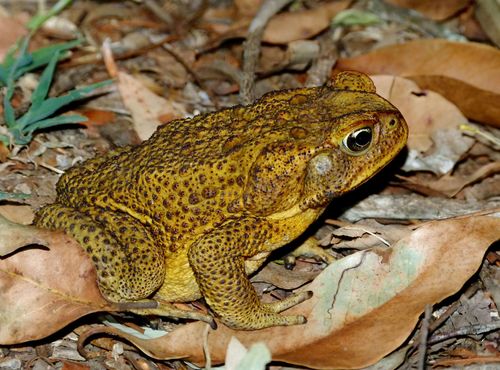
Cane Toad
The Cane Toad is a resilient survivor, notable for its adaptability and formidable toxin. Found from forests to urban sprawl, its invasive tendencies and breeding prowess make it a fascinating yet controversial figure in ecosystems worldwide.
10-15 years
Lifespan
Least Concern
Conservation Status
Increasing
Population Trend
Distribution Range of the Cane Toad
The Rhinella marina, commonly known as the Cane Toad, is native to Central and South America. Its natural range extends from the Amazon Basin in Peru, eastward across the Amazonas Region of Brazil, and northward to Mexico. It is also found in parts of the southeastern United States and the Caribbean due to introductions.
Cane Toad's Habitat
Environmental Conditions
Rhinella marina thrives in a variety of environments, from tropical rainforests to grasslands, and is capable of adapting to human-altered landscapes such as agricultural fields, gardens, and urban areas. The typical climate in its native range is tropical and semi-tropical, with high humidity and variable precipitation.
Ecological Niche
This toad occupies a broad ecological niche, often found near bodies of water as they require standing water for breeding. They are generalist feeders, consuming a wide range of invertebrates and small vertebrates. Due to their adaptability, they have minimal specific environmental constraints but prefer warm, moist conditions.
Copyright @ Nature Style Limited. All Rights Reserved.
 English
English